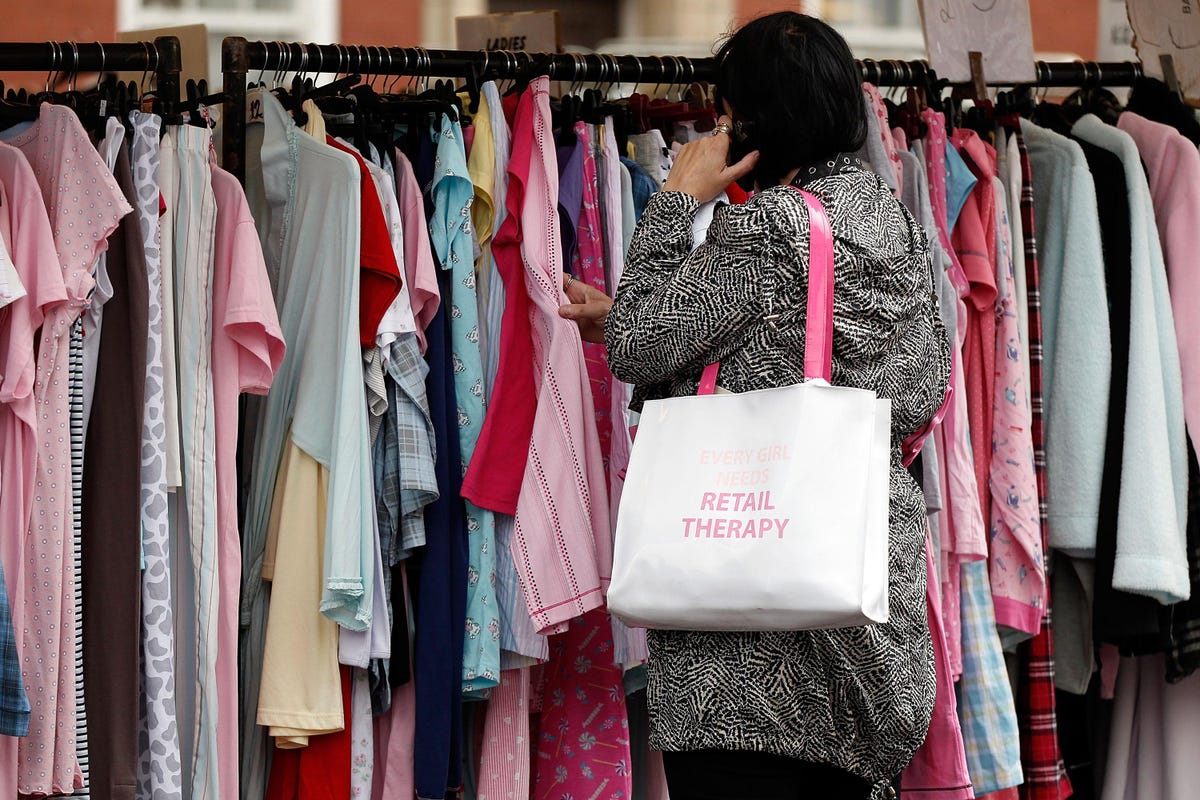
A shopper searches for clothing bargains at Bolton Market (Photo by Christopher Furlong/Getty … [+]
The combined effect of the supply chain crisis at all ports and overland transportation delays due to a lack of enough drivers is leading fashion executives to increase fashion apparel prices by 3% next year, according to The Business of Fashion and McKinsey and Co. That doesn’t stop 15% of the polled executives from saying that they will increase prices on apparel by more than +10%.
According to the report, inflationary pressures are caused by a combination of material shortages, transportation bottlenecks, and rising shipping costs. The study surveyed more than 220 fashion executives and experts.
Not mentioned in the report is the possibility that some fashion merchandise will arrive too late for holiday selling and stores may be forced to take markdowns on those new arrivals after the holidays in order to find customers. This may keep some prices at a manageable level.
Many retailers like Walmart
Another factor to consider is the sales growth of recycled clothes. Demand for second-hand clothing is growing, and while it is currently less than 10% of the global textile market (according to Textile Exchange), recycled clothes are expected to become mainstream in 2022. This new trend is “social commerce” and will encourage customers to proudly display fashion labels.
MORE FOR YOU
There have been two years of disruption. The fashion industry posted a decline of -20% in 2020 over 2019. 69% of companies were value destroyers in 2020 according to the McKinsey Global Fashion Index (MGFI); that compares with 61% in 2019 and just 28% in 2011. About 7% of all companies left the market entirely, either due to financial distress or because they were bought by rivals.
Taking all of this into account, there are ten themes that The Business of Fashion thinks are critical in 2022 for the fashion business:
1. Uneven recovery. Covid-19 related shock will be uneven across consumer markets.
2. Logistics gridlocks. The disruptions of 2021 will continue.
3. Luxury Opportunity is Domestic. While travel will steadily return, international tourism will take until 2023- 2024 to build back.
4. Wardrobe reboot. After focusing on loungewear and sportswear for two years, there is a pent-up demand for new wardrobes.
5. Metaverse mindset. As consumers spend more time on-line, virtual fashion will create new communities that influence brand choices.
6. Social Shopping. There is a surge of social shopping that will continue.
7. Circular textiles. The fashion industry is now into recycling clothes. They will be rolled out in large scale.
8. Product passports. Brands are using ‘passports’ to share product information with both consumers and partners to authenticate their brands and protect sales.
9. Cyber resilience. As digitization of fashion reaches new heights, it faces more cyber-attacks. Brand must shore up defenses.
10.Talent crunch. Companies must rely on brand appeal or the alure of fashion to attract and retain talent in a tight employment market.
POSTSRIPT: The retail industry leaders must act fast to protect their leadership roles. New fashion has always been a source of customer excitement and has attracted many people in the past. Brands must be fashion forward in order to be successful. All the more these days because the environment is hostile; the new Omicron variant of the coronavirus is scary and will delay shopping sprees by many customers. It may make this Christmas shopping season even more uncertain.




